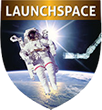Course Details
Course Summary
This seminar provides a detailed look of solid rocket motors (SRMs) and the sensitivity of user system performance requirements and their impact on the design, reliability and cost of the SRM. It will also provide an understanding of solid propellant motor and component technologies, design drivers; motor internal ballistic parameters and combustion phenomena and an insight to their limitations. The course includes a detailed review of component design and analysis; critical manufacturing process parameters; transportation and handling, and integration of motors into launch vehicles and missiles. General approaches used in the development of new motors. Also discussed is the importance of employing formal systems engineering practices for the definition and synthesis of requirements, the use of design and cost trade studies and processes and methodologies for identifying and mitigating risks. A review of the requirements, design and development approaches and associated analyses and codes used to balance customer vs. SRM manufacturer’s imposed requirements for each SRM component, Also provided are comparisons to liquid and hybrid propulsion systems
All types of SRMs are included, with emphasis on current and recently developed motors for commercial and DoD/NASA launch vehicles such as Lockheed Martin's Athena series, Orbital Sciences' Pegasus and Taurus series, the strap-on motors for the Delta series (III and IV), Titan V, and the propulsion systems for Ares / Constellation vehicle. The course summarizes the use of surplus military motors (including Minuteman, Peacekeeper, etc.) for DoD target and sensor development and university research programs.
Course Materials
Include extensive notes and reference materials.
Who Should Attend
The course is designed for personnel from government agencies, prime contractor users, system engineers, program planners, vehicle design engineers and other users of SRMs needing an in-depth understanding of SRM selection, engineering and applications
What You Will Learn
- Solid rocket motor principles and key requirements.
- Motor design drivers and sensitivity on the design, reliability, and cost.
- Detailed propellant and component design features and characteristics.
- Propellant and component manufacturing processes.
- SRM/Vehicle interfaces, transportation, and handling considerations.
- Development approach for qualifying new SRMs.
Course Outline
- Introduction to Solid Rocket Motors (SRMs).
SRM terminology and nomenclature, survey of types and applications of SRMs, and SRM component description and characteristics. - SRM Design and Applications.
Fundamental principles of SRMs, key performance and configuration parameters such as total impulse, specific impulse, thrust vs. motor operating time, size constraints; basic performance equations, internal ballistic principles, preliminary approach for designing SRMs; propellant combustion characteristics (instability, burning rate), limitations of SRMs based on the laws of physics, and comparison of solid to liquid propellant and hybrid rocket motors. - Definition of SRM Requirements.
Impact of customer/system imposed requirements on design, reliability, and cost; SRM manufacturer imposed requirements and constraints based on computer optimization codes and general engineering practices and management philosophy. - SRM Design Drivers and Technology Trade-Offs.
Identification and sensitivity of design requirements that affect motor design, reliability, and cost. Understanding of, interrelationship of performance parameters, component design trades versus cost and maturity of technology; exchange ratios and Rules of Thumb used in back-of-the envelope preliminary design evaluations. - Key SRM Component Design Characteristics and Materials.
Detailed description and comparison of performance parameters and properties of solid propellants including composite (i.e., HTPB, PBAN, and CTPB), nitro-plasticized composites, and double based or cross-linked propellants and why they are used for different motor and/or vehicle objectives and applications; motor cases, nozzles, thrust vector control & actuation systems; motor igniters, and other initiation and flight termination electrical and ordnance systems. - SRM Manufacturing/Processing Parameters.
Description of critical manufacturing operations for propellant mixing, loading into the SRM, propellant grain inspection and component fabrication and acceptance testing - SRM Transportation and Handling Considerations.
General understanding of requirements and solutions for transporting, handling, and processing different motor sizes and DOT propellant explosive classifications and licensing and regulations. - Launch Vehicle Interfaces, Processing and Integration.
Key physical, mechanical, functional, and electrical interfaces between the SRM and launch vehicle and launch facility. Comparison of interfaces for both strap-on and straight stack applications. - SRM Development Requirements and Processes.
- Approaches and timelines for developing new SRMs. Description of a demonstration and qualification program for both commercial and government programs. Impact of decisions regarding design philosophy (state-of-the-art versus advanced technology) and design safety factors. Motor sizing methodology and studies (using computer aided design models). Customer oversight and quality program. Motor cost reduction approaches through design, manufacturing, and acceptance. Castor 120 motor development example.
Instructor
Mr. Lee has more than 43 years of experience in the space and missile industry. He was a Senior Program Manager at Thiokol where he directed and managed the development and qualification of many DoD SRMs, including Peacekeeper, Small ICBM and Castor 120 SRM programs. Mr. Lee has extensive experience in defining and synthesizing customer requirements, developing and coordinating SRM performance and interface requirements at all levels in the space and missile industry, including government agencies, prime contractors and suppliers. He has been active in coordinating functional and physical interfaces with commercial spaceports in Florida, California, and Alaska. He is active in developing safety criteria and government/industry standards with participation of representatives from academia, private industry and government agencies including the United States Air Force (SMC, 45th Space Wing); FAA/AST; Army Space and Strategic Defense Command, and NASA centers at Kennedy, Johnson, Marshall, and Jet Propulsion Laboratory. He has also consulted with domestic and foreign government agencies (Israel’s IMI), Brasil’s (CTA) and launch vehicle contractors (Italy’s Avio Group) in the development, material selection, and testing of SRM propulsion systems. Mr. Lee has a MS in Engineering Administration and a BS in EE from the University of Utah. He has also completed certification courses for system engineering through International Systems Engineering (INCOSE) and Program Management Professional (PMP) through Program Management Institute (PMI).
